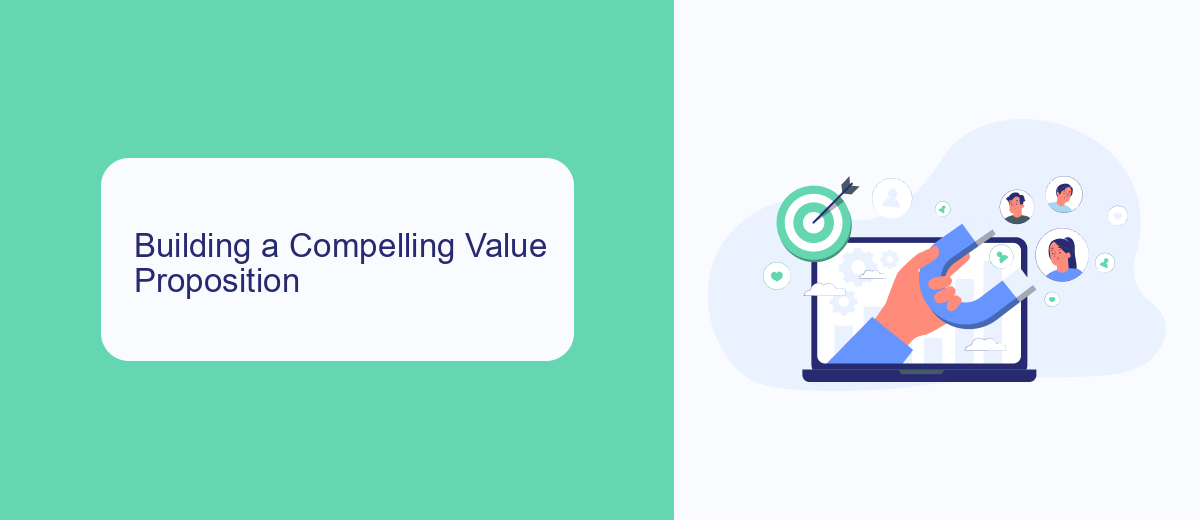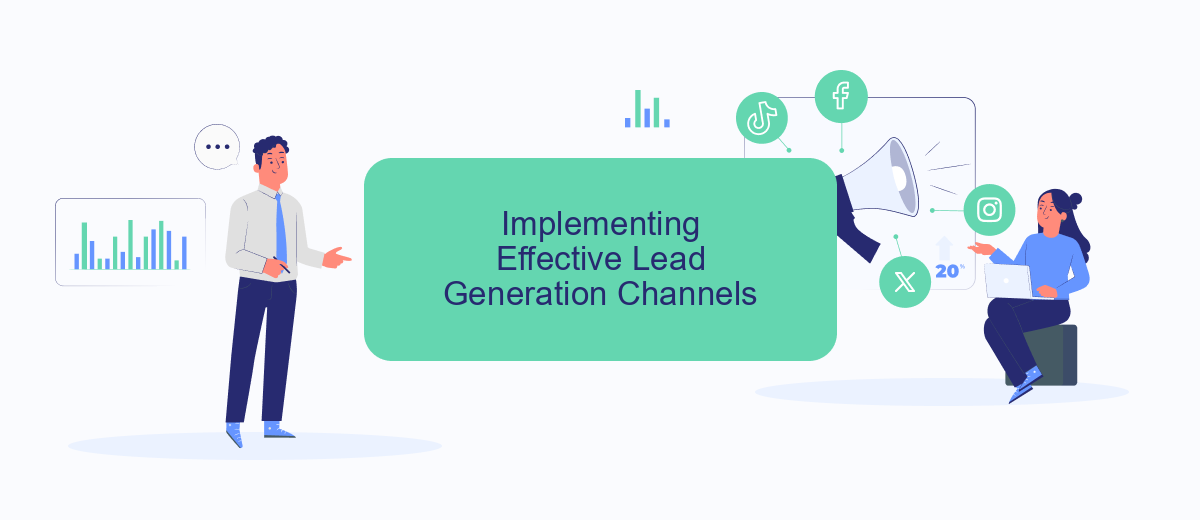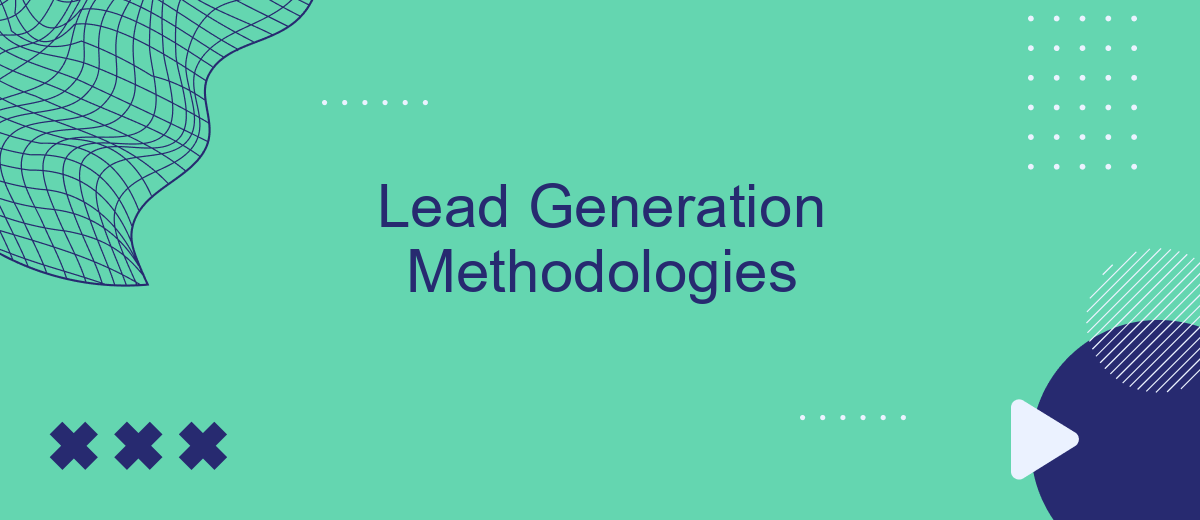In today's competitive business landscape, effective lead generation is crucial for driving growth and sustaining success. Understanding and implementing the right methodologies can make a significant difference in acquiring high-quality leads. This article explores various lead generation methodologies, providing insights into their advantages and applications. By leveraging these strategies, businesses can enhance their outreach, optimize conversion rates, and ultimately achieve their sales and marketing objectives.
Understanding Your Target Audience
Understanding your target audience is a crucial step in effective lead generation. It involves identifying the specific group of people who are most likely to be interested in your products or services. By gaining insights into their behaviors, preferences, and pain points, you can tailor your marketing strategies to better resonate with them and increase conversion rates.
- Conduct market research to gather demographic and psychographic data.
- Create buyer personas to represent different segments of your audience.
- Analyze competitors to understand their audience engagement strategies.
- Utilize social media analytics to track audience interactions and trends.
- Engage in direct communication through surveys and feedback forms.
By thoroughly understanding your target audience, you can craft personalized messages that address their specific needs and desires. This not only enhances the effectiveness of your lead generation efforts but also builds trust and loyalty among your potential customers. Ultimately, a well-defined audience understanding leads to more meaningful connections and successful business outcomes.
Building a Compelling Value Proposition

Creating a compelling value proposition is essential for effective lead generation, as it clearly communicates the unique benefits and advantages your product or service offers. To begin, identify the specific problems your target audience faces and articulate how your solution addresses these challenges better than competitors. This involves understanding your audience's needs, preferences, and pain points through thorough market research. A strong value proposition should be concise, focusing on the most impactful benefits that resonate with potential customers, and should be easily understandable at a glance.
Incorporating integration tools can enhance your value proposition by demonstrating how seamlessly your product fits into existing workflows. For instance, utilizing services like SaveMyLeads can automate data transfers between platforms, highlighting efficiency and convenience as key benefits. By showcasing such integrations, you can emphasize time-saving and productivity-enhancing aspects of your offer, making it more attractive to prospects. Remember, a compelling value proposition not only differentiates you from competitors but also establishes a clear and persuasive reason for potential customers to choose your solution.
Implementing Effective Lead Generation Channels

Implementing effective lead generation channels is crucial for businesses aiming to expand their customer base and increase revenue. The key lies in selecting the right mix of channels that align with your target audience and business objectives. By understanding the strengths and weaknesses of each channel, businesses can optimize their lead generation strategies to achieve better results.
- Content Marketing: Create valuable and relevant content to attract and engage potential leads.
- Social Media: Leverage platforms like LinkedIn, Facebook, and Instagram to reach a wider audience and generate leads through engaging posts and advertisements.
- Email Marketing: Use targeted email campaigns to nurture leads and convert them into customers.
- SEO and SEM: Optimize your website for search engines and use paid search marketing to drive traffic and capture leads.
- Webinars and Events: Host online and offline events to connect with potential leads and showcase your expertise.
By diversifying lead generation efforts across multiple channels, businesses can maximize their reach and improve lead quality. Regularly analyzing and adjusting strategies based on performance metrics ensures that the chosen channels continue to deliver value and support business growth.
Nurturing and Qualifying Leads

Nurturing and qualifying leads are crucial steps in the lead generation process, ensuring that potential customers are guided through the sales funnel effectively. Nurturing involves building relationships with leads by providing valuable information and personalized communication, helping them to understand the benefits of your product or service. This process keeps your brand top-of-mind and increases the likelihood of conversion.
Qualifying leads, on the other hand, involves assessing whether a lead is likely to become a paying customer. This step helps sales teams prioritize their efforts on leads that are most likely to convert, saving time and resources. By identifying the right leads, businesses can tailor their approach to meet specific needs and improve overall sales efficiency.
- Use targeted content to nurture leads through email campaigns and social media engagement.
- Implement lead scoring systems to evaluate the readiness of leads to make a purchase.
- Engage with leads through personalized interactions to build trust and credibility.
- Regularly update and refine lead qualification criteria based on market and customer insights.
By effectively nurturing and qualifying leads, businesses can enhance their lead generation strategy, resulting in higher conversion rates and improved customer relationships. This approach not only maximizes sales opportunities but also fosters long-term loyalty and satisfaction.
Measuring and Optimizing Your Lead Generation Efforts
To effectively measure and optimize your lead generation efforts, it's crucial to establish clear metrics and KPIs that align with your business goals. Start by tracking the number of leads generated, their quality, and the conversion rates at each stage of the sales funnel. Utilize tools like Google Analytics and CRM systems to gather data and gain insights into your lead sources and customer behavior. Regularly analyze this data to identify trends and areas for improvement, ensuring that your strategies remain aligned with market demands and customer preferences.
Optimization involves testing different approaches and refining your strategies based on performance metrics. Implement A/B testing for landing pages, email campaigns, and ad creatives to determine what resonates best with your audience. Additionally, consider automating and integrating your lead generation processes using services like SaveMyLeads, which can streamline data transfer between various platforms and ensure timely follow-ups. By continuously refining your approach and leveraging the right tools, you can enhance the efficiency and effectiveness of your lead generation efforts, ultimately driving better results for your business.
FAQ
What is lead generation and why is it important for businesses?
What are some effective lead generation methodologies?
How can automation improve lead generation efforts?
What role does data play in lead generation?
How can businesses measure the success of their lead generation strategies?
If you use Facebook Lead Ads, then you should know what it means to regularly download CSV files and transfer data to various support services. How many times a day do you check for new leads in your ad account? How often do you transfer data to a CRM system, task manager, email service or Google Sheets? Try using the SaveMyLeads online connector. This is a no-code tool with which anyone can set up integrations for Facebook. Spend just a few minutes and you will receive real-time notifications in the messenger about new leads. Another 5-10 minutes of work in SML, and the data from the FB advertising account will be automatically transferred to the CRM system or Email service. The SaveMyLeads system will do the routine work for you, and you will surely like it.
